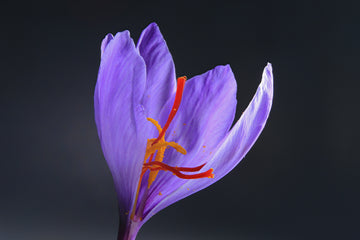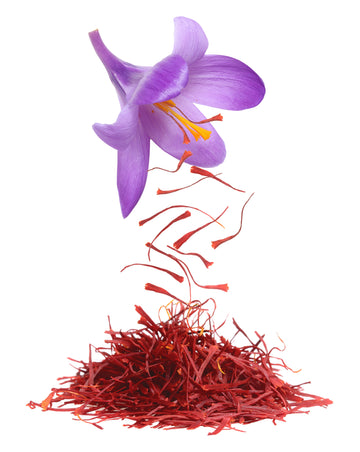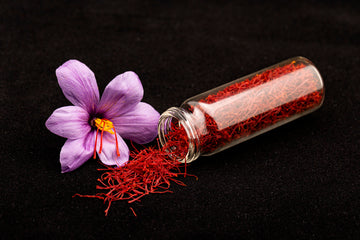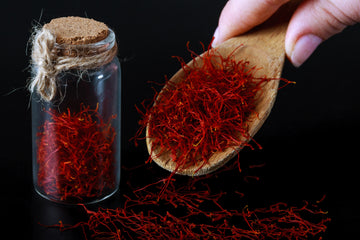
The Reality of Saffron
The King of Spices saffron is greatly sought after for its rich hue, powerful perfume, and one-of-a-kind flavor. Saffron has been used for thousands of years and has been an important part of many civilizations. This essay delves into the origin, history, and culture of saffron, revealing its true nature.
What is Saffron?
The history of saffron cultivation and usage spans many cultures, continents, and civilisations. Saffron, a spice derived from the dried stigmas of the saffron crocus (Crocus sativus), has remained among the world's most costly substances throughout history. With its bitter taste, hay-like fragrance, and slight metallic notes, saffron has been used as a seasoning, fragrance, dye, and medicine. Saffron is native to Southwest Asia, but was first cultivated in Greece.[1] Its rarity, high demand, and association with wealth stemmed from its reputation as a delectable trade good, enticing fragrance, and eye-catching hue.
The origins of saffron are entangled with those of long-lost civilizations. Saffron had several purposes in ancient Egypt, including culinary usage, religious ceremonies, and medical concoctions. Saffron was highly prized by the Greeks for its many different uses, including in the kitchen, as well as in cosmetics and colors. Since Persia gained a reputation for producing some of the world's best saffron, Persian culture has a special place in the annals of saffron. [2]
Saffron's Cultural Significance
Saffron's significance extends well beyond the kitchen and into many traditional rituals. Saffron has religious, cultural, and commercial significance in many different traditions. It has a place in traditional rites, celebrations, and religious activities. In many cultures, including those of Iran, India, Spain, and the Middle East, saffron is associated with positive emotions and ideals.
Saffron's high price is a result of the time and effort required to harvest the spice. [3] Saffron threads are harvested by hand from the blossoms for a brief period of time in the fall. Only three tiny red stigmas, or saffron threads, are produced by each bloom, and these must be carefully harvested and dried to retain their flavor and scent. Saffron's rarity is enhanced by the large number of blooms needed to harvest a modest amount of the spice.
Saffron's Culinary Uses
Saffron is widely prized as a culinary component due to its distinctive taste and scent. It's a staple in many cuisines thanks to the distinctive flavor it lends to food and the brilliant yellow color it imparts. Iranian, Indian, Spanish, and Moroccan cuisines all feature prominent uses of saffron. Rice, stews, desserts, and drinks are all enhanced by the use of this spice.
The Medicinal Properties of Saffron
Saffron's popularity stems from more than just its culinary uses; the spice may possibly have therapeutic effects. Crocin, safranal, and picrocrocin are just a few of the bioactive chemicals found in the spice that give it its therapeutic effects. Antioxidant, anti-inflammatory, and antidepressant properties have all been attributed to saffron. Potential advantages include elevated disposition, sharpened mental acuity, and reduced signs of sadness and premenstrual dysphoric disorder (PMDD).
Saffron's Global Demand and Challenges
Saffron's distinctive features and rising acclaim as a culinary and aromatic ingredient are driving a sustained increase in demand across the world. However, there are obstacles to saffron production, such as the labor-intensive nature of cultivation, the high cost of harvesting and processing, and the widespread availability of counterfeit saffron. Protecting saffron's reputation and living up to consumer expectations requires constant vigilance on the spice's authenticity and quality. [4]
Conclusion
Due to its long tradition, cultural importance, and culinary charm, saffron has become an essential spice in many cultures. Saffron's rich history and wide range of applications, from ancient times to the present day, never cease to amaze and excite. Its fine threads capture the soul of centuries of culture and history in their meticulous harvesting and drying. While appreciating saffron for what it is, we must also remember its rich history, recognize its value, and safeguard its purity and authenticity for future generations.
Reference:
- Golmohammadi, F. (2014). Saffron and its farming, economic importance, export, medicinal characteristics, and various uses in South Khorasan Province-East of Iran. International Journal of Farming and Allied Sciences, 3(5), 566-596. http://ijfas.com/wp-content/uploads/2014/05/566-596.pdf, https://www.cs.mcgill.ca/~rwest/wikispeedia/wpcd/wp/h/History_of_saffron.htm
- Kumar, R., Singh, V., Devi, K., Sharma, M., Singh, M. K., & Ahuja, P. S. (2008). State of art of saffron (Crocus sativus L.) agronomy: A comprehensive review. Food Reviews International, 25(1), 44-85. https://www.tandfonline.com/doi/abs/10.1080/87559120802458503
- Filipski, M., Aboudrare, A., Lybbert, T. J., & Taylor, J. E. (2017). Spice price spikes: Simulating impacts of saffron price volatility in a gendered local economy-wide model. World Development, 91, 84-99. https://www.sciencedirect.com/science/article/abs/pii/S0305750X16305204
- Fanelli, V., Mascio, I., Miazzi, M. M., Savoia, M. A., De Giovanni, C., & Montemurro, C. (2021). Molecular approaches to agri-food traceability and authentication: An updated review. Foods, 10(07), 1644. https://www.mdpi.com/2304-8158/10/7/1644





